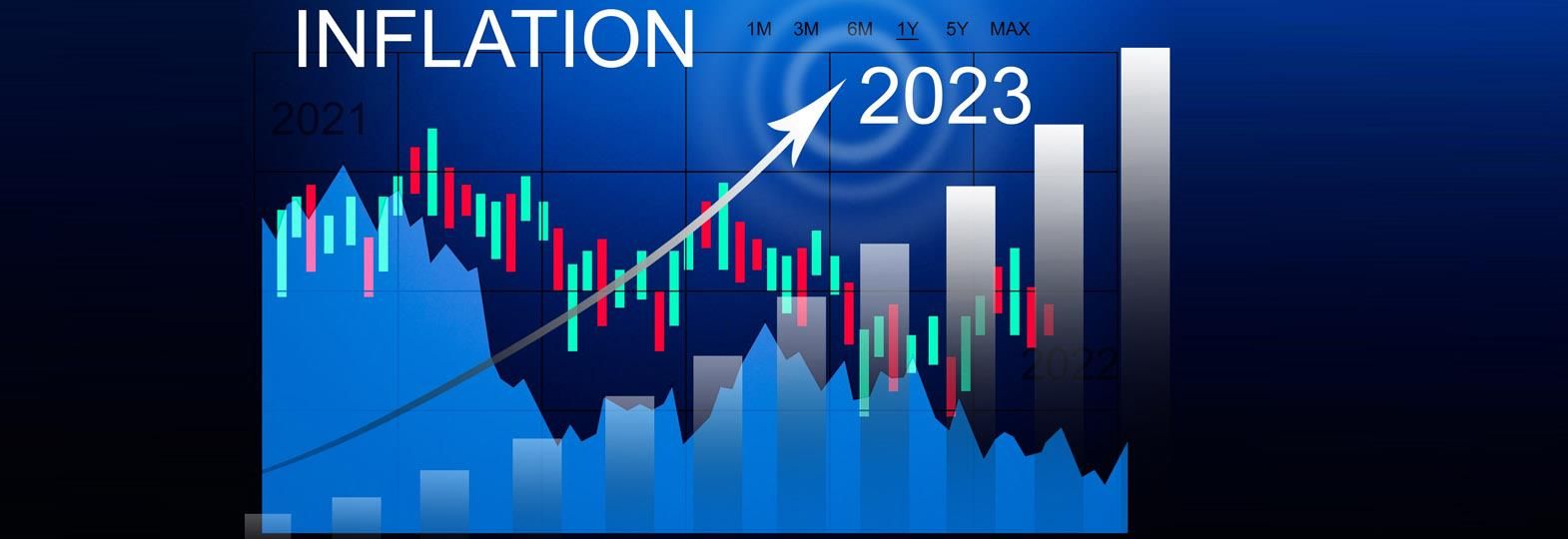The term ‘greedflation’ was first used in the early 1970s. It refers to a concept which states that excessive corporate greed for profits drives up the inflation resulting in increased prices or greedflation. Some economists believe it is a contributor to inflation, while others take it as a consequence of inflation. Some say it is high time that the concept is taken seriously by economists and the governments, while others still debate whether it is a real phenomenon or just an idle theory.1
The term greedflation is currently in news as it could be a potential explanation for the current high levels of inflation in several countries the world over. There are several ways in which it could be contributing to the rising prices as mentioned below.
The pass-through effect : When businesses raise prices, they often pass those higher costs on to consumers in the form of higher prices, which in turn can lead to a spiral of rising prices, as consumers demand higher wages to compensate for the higher prices, which businesses then pass on to consumers in the form of even higher prices.
Through expectations : When businesses and consumers expect prices to rise, they are more likely to act in ways that contribute to inflation. For example, businesses may be more likely to raise prices in anticipation of higher costs, and consumers may be more likely to buy goods and services now, before prices rise even further.
Inflation through market power : When businesses have a lot of market power, they can raise prices without losing customers. This is because consumers have few other options for buying the goods and services that they need. In this situation, businesses can use their market power to extract higher profits from consumers, even when there is no underlying increase in costs.
Is greedflation real?
For over a year now, consumers and businesses, around the world, have struggled with inflation. But the soaring costs have not stopped the profits of the corporates. The companies in last year’s Fortune 500 alone generated an all-time high $1.8 trillion in profit on $16.1 trillion in revenue.2
Another piece of evidence that greedflation is real comes from the fact that inflation has been rising faster in some industries than others. For example, the price of food has risen by more than five per cent in the past year, while the price of clothing has only risen by two per cent. This suggests that businesses in the food industry may be raising prices more than businesses in the clothing industry.
Another study by the US Federal Trade Commission found that businesses raised prices by an average of 3.5 per cent in the months following the COVID-19 pandemic, even though their costs had only increased by 1.5 per cent. This suggests that businesses may have been using the pandemic as an excuse to raise prices and increase their profits.
A study by the Economic Policy Institute found that corporate profits in the United States rose by 25 per cent in the first quarter of 2022, while wages rose by only 5 per cent. This suggests that corporations may be taking advantage of the current inflationary environment to raise prices and boost their profits.
Here it is important to note that greedflation is not the only factor that contributes to inflation. Other factors, such as supply chain disruptions and increased demand, can also play a role. Additionally, the war in Ukraine has also contributed to the rise in prices, as it has led to higher prices of energy and food commodities. However, greedflation can make inflation worse, and it is something that governments and businesses need to be aware of. It is also important to note that not all corporations are raising prices at the same rate. Some companies are more sensitive to the inflationary environment than others.
Overall, it is difficult to say definitively whether greedflation is a real factor in the current inflationary environment. Though there is some evidence to suggest that it may be a factor, there are also other factors that could be contributing to the rise in prices. However, the fact that businesses have raised prices even when their costs have not increased suggests that greedflation may be a factor in the rise of inflation.
Impact of greedflation
Greedflation can have several consequences. It can make it harder for people to afford basic necessities, thus leading to a decrease in economic growth. It can also result in social unrest, as people might feel anxious about the rising cost of living.
On the other hand, one of the potential advantages of greedflation is that it can lead to increased profits for businesses. However, this advantage is outweighed by the negative consequences of greedflation, such as higher prices for consumers, lower sales for businesses, and damage to consumer trust.
Impact of greedflation on retailers
Lower sales for retailers : When prices are too high, consumers are less likely to buy goods and services. This can lead to a decline in sales for businesses, which can hurt their bottom line.
Damage to consumer trust : When consumers believe that businesses are raising prices unfairly, they are less likely to do business with those corporates. This can lead to a loss of customers for firms, which can make it difficult for them to stay in market.
Government intervention : If prices rise too high, governments may take action to regulate prices or to provide relief to consumers. This can create additional costs for businesses, which can further hurt their bottom line.
Increased inflation : When businesses raise prices beyond the level of inflation, it can lead to a spiral of inflation, as businesses raise prices in response to rising costs, which leads to consumers demanding higher wages, which leads to businesses raising prices even more, and so on.
Impact of greedflation on consumers
Reduced purchasing power : Increased inflation (which in part is due to greedflation) can lead to a decrease in purchasing power for consumers, as they have to pay more for goods and services. This can make it difficult for consumers to afford necessities, such as food and housing.
Increased debt : Consumers may have to take loans to cover the rising cost of living. This can make it difficult for them to get out of debt leading to financial hardship.
Reduced economic activity : A decrease in economic activity might be observed, as consumers may be less likely to spend money if they are worried about rising prices. This can lead to job losses and a decline in economic growth.
Implications of greedflation for the future of retail
Increased competition from online retailers : Online retailers are not subject to the same costs as brick-and-mortar retailers, such as rent and labour. This means that they can often offer lower prices, which can make it difficult for brick-and-mortar retailers to compete.
Increased demand for discount retailers : When prices are high, consumers are more likely to shop at discount retailers. This can lead to a decline in sales for traditional retailers.
Increased consolidation in the retail industry : As smaller retailers struggle to compete, they may be forced to close their businesses. This can lead to increased consolidation in the retail industry, as larger retailers acquire smaller retailers.
Tackling greedflation
There are various ways to address greedflation. One is to increase competition in the marketplace, as this can make it more difficult for businesses to raise prices without losing customers. Another is to strengthen antitrust laws, as this can make it more difficult for businesses to collude and raise prices together. Governments can also play a role in regulating prices, although this can be a delicate balancing act, as too much regulation can stifle economic growth.
For retailers who want to succeed during the times of inflation need to be prepared to adapt to the changing landscape. This may include offering lower prices, increasing their focus on customer service, or expanding their online presence.










Comments